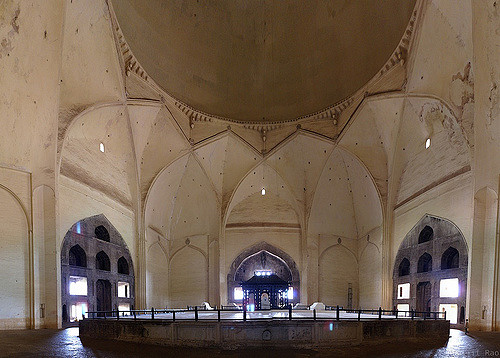Gol Gumbaz at Bijapur is the mausoleum of king Muhammad Adil Shah, Adil Shah Dynasty. Construction of the tomb, located in Vijayapura (formerly Bijapur), Karnataka, India, was started in 1626 and completed in 1656.

The name is based on Gola gummata derived from Gol Gombadh meaning "circular dome". It follows the style of Indo-islamic architecture. Even a slight whisper by someone standing in this gallery can be heard everywhere in the gallery, and if somebody claps, the echo can be heard several times.
The structure is composed of a cube, 47.5 m (156 ft) on each side, capped by a roof 44 m (144 ft) in external diameter. Eight intersecting arches created by two rotated squares that create interlocking pendentives support the dome.

Inside View
At each of the four corners of the cube, is a dome-capped octagonal tower seven storeys high with a staircase inside. The upper floor of each tower opens on to a round gallery which surrounds the dome. The dome is one of the largest domes constructed before the modern era and was the largest in existence when it was constructed.

Inside the mausoleum hall is a polygonal podium, with steps on each side. In the middle of the podium, a cenotaph slab on the ground marks the actual grave below, "the only instance of this practice" in the architecture of the Deccan sultanates. In the middle of the north side, "a large semi-octagonal bay" protrudes out. With an area of 1,700 m2 (18,000 sq ft), the mausoleum has one of the biggest single chamber spaces in the world. Running around the inside of the dome is the whispering gallery where even the softest sound can be heard on the other side of the mausoleum due to the acoustics of the space.

Gol Gumbaz Archaeological museum